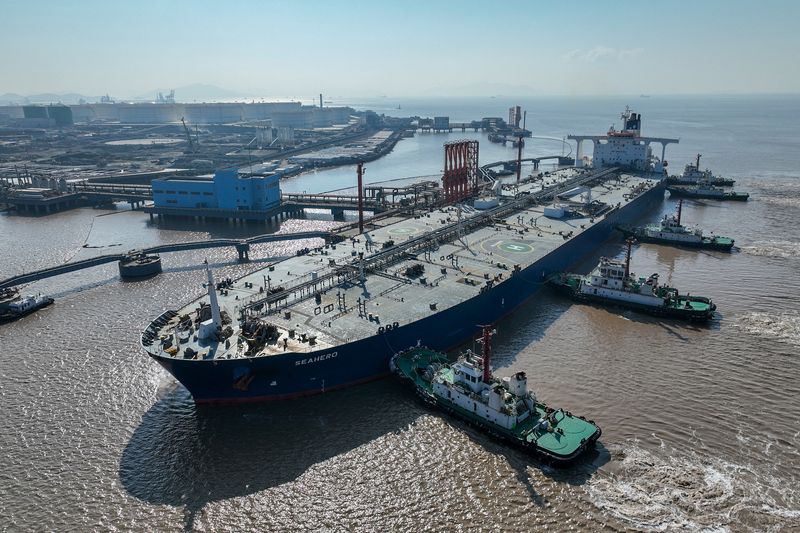
By Arathy Somasekhar
(Reuters) – Oil prices edged lower on Tuesday on worries about a slowing Chinese economy crimping demand, though a growing consensus that the U.S. Federal Reserve will begin cutting its key interest rate as soon as September limited declines.
Brent futures fell 9 cents, or 0.1%, to $84.76 a barrel by 12:21 GMT, while U.S. West Texas Intermediate (WTI) crude dropped 13 cents, or 0.2%, to $81.78.
China’s economy grew much slower than expected in the second quarter, hamstrung by a protracted property downturn and job insecurity.
The world’s second-largest economy grew 4.7% in April-June, official data showed, its slowest since the first quarter of 2023 and missing a 5.1% forecast in a Reuters poll. It also slowed from the previous quarter’s 5.3% expansion.
China’s refinery output fell 3.7% in June from a year earlier,official data showed on Monday, down for a third month partly due to planned maintenance, while lower processing margins and lacklustre fuel demand pushed independent plants to cut output.
Meanwhile, Fed Chair Jerome Powell said on Monday the three U.S. inflation readings over the second quarter of this year “add somewhat to confidence” that the pace of price increases is returning to the central bank’s target in a sustainable fashion, remarks market participants interpreted as indicating a turn to interest rate cuts may not be far off.
Lower interest rates decrease the cost of borrowing, which can boost economic activity and oil demand.
On the supply side, Houthi fighters in Yemen – responding to Israel’s bombardment of Gaza – targeted three vessels, including an oil tanker, in the Red and Mediterranean seas with ballistic missiles, drones and booby-trapped boats, they said on Monday.

While crisis in the Middle East has not impacted supply, attacks on ships in the Red Sea has forced vessels to take longer routes, meaning oil remains on the water for longer.
Elsewhere, Russian Deputy Prime Minister Alexander Novak said on Monday the global oil market will be balanced in the second half of the year and thereafter due to a production deal among the Organization of the Petroleum Exporting Countries and its allies, collectively known as OPEC+.
This post is originally published on INVESTING.




